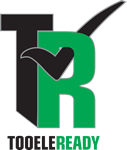
How to recover from…
What Individuals and Families can do
What Government can do
What Emergency Management does
What Businesses can do
What Communities can do
What Schools can do
What Organizations can do
Recovery Support Functions
What is Disaster Recovery?
- Recovery consists of those activities that continue beyond the emergency period to restore critical community functions and begin to manage stabilization efforts. The recovery phase begins immediately after the threat to human life has subsided.
- Is the restoration of all aspects of the disaster’s impact on a community and the return of the local economy to some sense of normalcy.
- The coordinated efforts and processes to affect the immediate, medium- and long term whole community regeneration of a community following a disaster.

Need Recovery Help?
Click here
Report Your Recovery Volunteer hours
Click here
Report Disaster Damage
Click here
The Recovery Continuum
The recovery process is a sequence of activities that move a community toward recovery. These activities are interdependent and may overlap. For example, some aspects of short term recovery may begin before the response to an incident or event has been completed; some large-scale, long-term recovery activities may need to be initiated within days after a disaster.
Vision of Recovery
Tooele County recovery will be smooth and efficient as we work with organizations, businesses, government offices, agencies, and individuals within the community to strengthen our resilience to overcome the disaster’s effects.
Components of Vision
- Whole community collaboration and input
- Community members will have accountability to restore community needs
- Governments will support the wants and needs of the community efforts within equitable reason
Stakeholders
- Businesses (small and corporate)
- Banks
- Faith-based and community organizations
- Non-profit organizations and churches
- Schools and academia
- Utility providers and companies
- Media outlets
- Government on all levels and departments, including state, local, tribal, territorial, and federal partners
- Emergency Management
Parts of recovery for a community
Each community is woven tightly by certain aspects in different ways. These parts are what make a community work as a community. Some aspects may be more dominant than others, but each are interwoven within a community to help it be successful as a community. It is important that each of these components of the community be addressed while preparing for recovery and working through recovery.
There are six recovery support functions but within each support function there are many aspects of the community that must be addressed for complete recovery.
Economic, Health and Social Services, Community Planning and Capacity Building, Infrastructure Systems, Housing Recovery, Natural and Cultural Resources.
Benefits of a successful Whole Community approach include:
- A shared understanding of community needs and capabilities
- Greater empowerment and integration of resources from across the community
- Stronger social infrastructure
- Establishment of relationships that facilitate more effective prevention, protection, mitigation, response, and recovery activities
- Increased individual and collective preparedness
- Greater resiliency at both the community and national levels
The opportunity that disasters present to address mitigation and promote sustainability. Realizing this vision for recovery will require action from all areas of society. This vision will be achieved when all individuals, organizations, businesses, and government agencies:
- Are well-informed about the direct and indirect consequences of hazards
- Recognize the need to plan for recovery, even where risks are reduced
- Understand the ways in which they rely on others and jointly pre-plan for recovery involving the social, economic, built and natural environments
- Act to ensure effective recovery arrangements are in place
- Take immediate post-event response and recovery actions which limit the repercussions of the event on society and the economy
- Integrate recovery considerations into everyday decision-making processes; and
- Are involved in pre-event planning about how they can use disasters as opportunities to reduce risks for their communities and local economy in the future.
Community recovery involves regeneration of a community’s functions, social structures and systems following a disaster. The ability of a community to achieve this will involve the holistic interaction between the community and the social, economic, natural and built environments.


